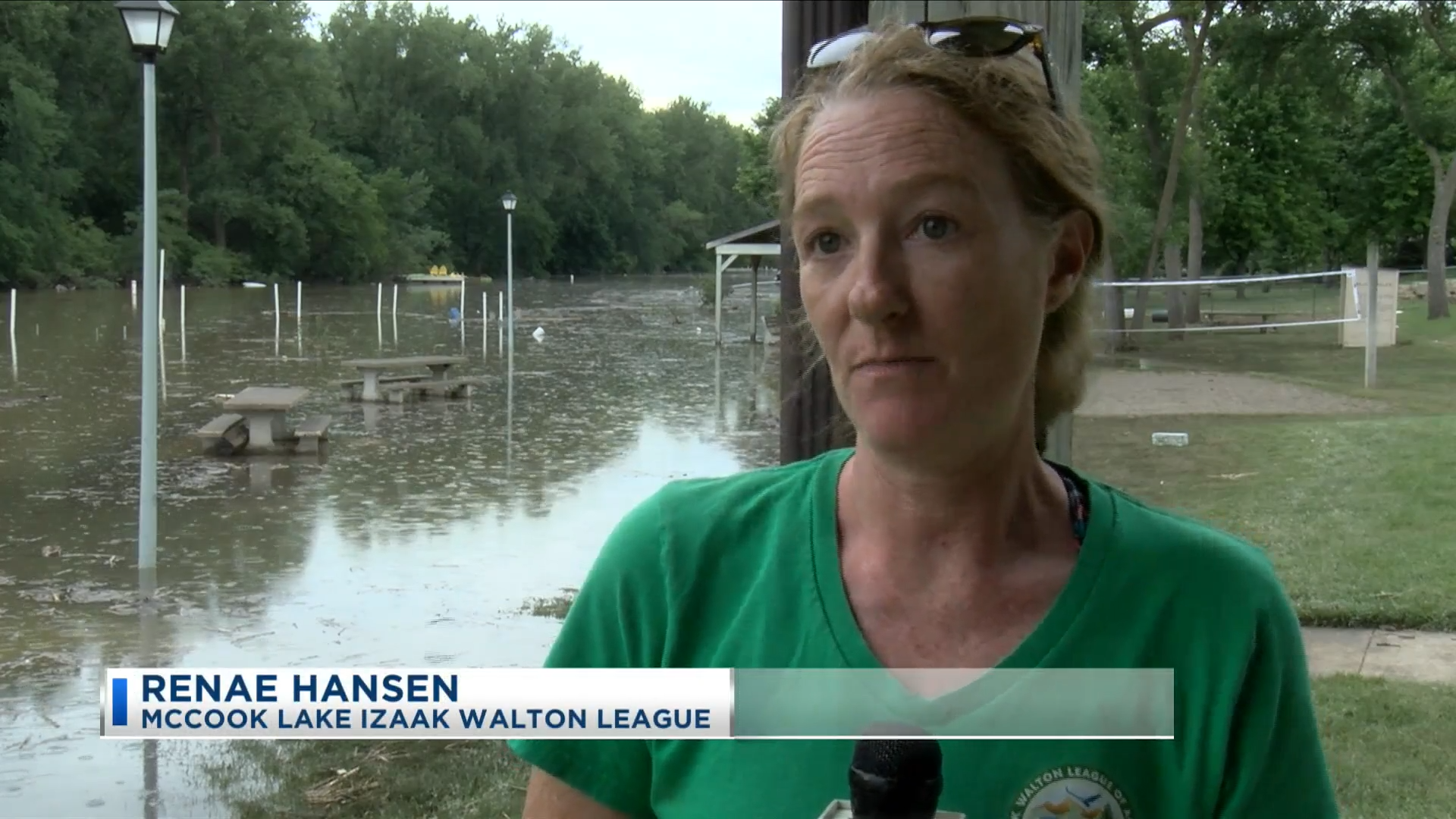In late June, McCook Lake, South Dakota, was hit by a flood that rapidly swamped the community following two days of thunderstorms that dumped as much as 13 inches of rain on the region.
At McCook Lake, at least 40 homes crumbled into the water or were severely damaged and hundreds of residents were suddenly without food, electricity and in many cases, a place to live. Kim Delaney of the McCook Lake Chapter described it as “gut wrenching” devastation.
 Renae Hansen of the McCook Lake Chapter describes efforts to help local residents displaced by a devastating flood.
Renae Hansen of the McCook Lake Chapter describes efforts to help local residents displaced by a devastating flood.
Renae Hansen, the Chapter’s caretaker, had been monitoring the weather and water levels. Once it became clear the flood was going to be catastrophic, she used Facebook Live to keep the community up to date. And she would continue to work at the hub of a makeshift—but effective—emergency response system in the absence of a state or local agency that could immediately help.
Hansen, along with husband Mike, Chapter president Joshua Stokes and other Chapter members, quickly established the McCook Lake Chapter grounds and clubhouse as the resource hub for the community. In the immediate aftermath, Hansen explained, people were anxious to get back to their homes to assess the damage.
“Providing a space for the community to gather for a meal was more than a meal,” Hansen says. “It was comfort knowing they were not alone in the disaster.”
Local businesses pitched in. Tyson Foods came one weekend and fed 1,200 people each day. Working with the McCook Lake volunteers, local organizations provided cleaning supplies, shovels, first-aid items and portable restrooms.
Thanks to a fundraising effort by the Chapter that raised $40,000, Joshua Stokes and other members were able to turn those donations into food and emergency hardware supplies, like dehumidifiers and wet-dry vacuums.
The material items supplied were essential to those who had lost everything. But the Chapter also provided a sense of hope.
The materials items supplied were essential to those who had lost everything. But the Chapter also provided a sense of hope.
“Emotional and physical support were essential,” Hansen said. “It was also an opportunity for us to find out what the community needed during the disaster.”
One local television station told viewers the Izaak Walton League has been “a beacon of aid” throughout the tragedy.
In a July 4 message to the Ike community, Stokes wrote, “It’s going to be a long, tedious task, but the Izaak Walton League, the McCook Lake Association and several other local organizations are preparing to do everything in our power to return life to normal.”
Hansen says it was four days before the Red Cross provided assistance and five days before the South Dakota Office of Emergency Management got involved. In August, some homeowners were still waiting to hear whether the Federal Emergency Management Agency (FEMA) would provide them with assistance.
The restoration of the area has continued with community-wide efforts to collect debris from the flooded areas and lake. In September, the Chapter worked on replacing more than 700 trees they had planted three years ago. During the flooding in June, virtually all the trees were lost.
At the Izaak Walton League’s national convention in July, League President Jodi Labs took a moment in her opening address to praise the remarkable efforts of the McCook Lake Chapter and the tireless leadership of Renae Hansen and her crew during the crisis.
The Chapter’s work serves as a model for how local organizations like the Izaak Walton League can step in to fill a void during a crisis.
...Prepare for the Worst
The toll of Hurricane Helene and Milton throughout the southeastern United States includes more than 200 lives lost and many communities destroyed. The McCook Lake flooding, extreme weather and other threats underscore the need for community organizations, like League chapters, as well as individuals and households to prepare emergency response plans that include:
- Essential supplies. Materials and equipment for first aid, food, water, power, sanitation and other needs.
- Who to contact. Phone numbers for local emergency response services like police, fire, utilities and public health. Share contact information with specific people at agencies, businesses and other organizations in the community who would take part in an emergency response.
- Types of threats. Imagine threats your community could face that might require evacuation, sheltering in place or other steps—flooding, tornado, wildfire, public health emergency or prolonged loss of electricity, drinking water or other utilities.
- Communication plans. Establish lists and protocols for how to communicate internally and externally in emergencies.
Top photo: More than 40 homes were lost or severely damaged by flooding in June at McCook Lake. Credit: McCook Lake Chapter.